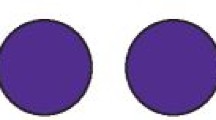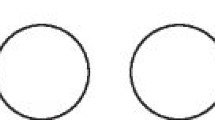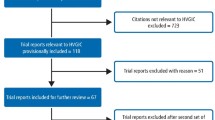Abstract
Design A cost-effectiveness analysis of caries management in primary molars using Hall technique (HT) versus conventional restoration (CR) from a pre-existing dataset from a randomised split-mouth trial, within primary care in Scotland, with a five-year follow-up.
Case selection Computer-generated block randomisation was used to match asymptomatic primary molars of 3-10-year-old children recruited from primary care, to either HT or CR arms.
Economic evaluation A cost-effectiveness analysis was undertaken. A five-year horizon was chosen. A societal perspective was adopted. Estimation of direct, indirect and opportunity costs were presented. Costs were discounted at 1.5%. Molar survival was chosen as the effectiveness measure.
Data analysis Statistical significance of primary outcome (survival) was examined using the log-rank test. Bootstrapping produced a sampling distribution of mean cost and effectiveness with a 95% confidence interval around a mean value. An incremental cost-effectiveness ratio (ICER) was provided.
Results HT molars had superior survival of 99% (95% CI: 98-100%) compared to CR at 92% (95% CI: 87-97%). Initials costs indicated HT to be more expensive than CR; however, direct costs, including retreatments, were cheaper for HT when using both NHS Scotland and NHS England cost data. Indirect/opportunity costs, including time and travel of parents, were significantly less for HT. Total cumulative costs were significantly lower in HT (32 GBP; 95% CI: 31-34) than CR (49 GBP; 34-69). HT dominated CR, being less costly and more effective with a mean ICER of 2.38 GBP spent additionally while losing 1% of molar survival with CR over HT.
Conclusions HT molars are cost-effective, compared to CR, when managing asymptomatic carious primary molars after five years' follow-up.
This is a preview of subscription content, access via your institution
Access options
Subscribe to this journal
Receive 4 print issues and online access
$259.00 per year
only $64.75 per issue
Buy this article
- Purchase on Springer Link
- Instant access to full article PDF
Prices may be subject to local taxes which are calculated during checkout
Similar content being viewed by others
References
Innes N P, Evans D J, Stirrups D R. Sealing caries in primary molars: randomized control trial, 5-year results. J Dent Res 2011; 90: 1405-1410.
National Institute for Health and Care Excellence. Guide to the Methods of Technology Appraisal. 2013. Available online at https://www.nice.org.uk/process/pmg9 (accessed January 2020).
Innes N P T, Clarkson, J E, Douglas G V A et al. Child Caries Management: a randomized controlled trial in dental practice. J Dent Res 2020; 99: 36-43.
Schwendicke F, Stolpe M, Innes N P T. Conventional treatment, Hall Technique or immediate pulpotomy for carious primary molars: a cost-effectiveness analysis. Int Endod J 2016; 49: 817-826.
Santamaría R M, Innes N P T, Machiulskiene V, Schmoeckel J, Alkilzy M, Splieth C H. Alternative caries management options for primary molars: 2.5-year outcomes of a randomised clinical trial. Caries Res 2017; 51: 605-614.
Taylor G D. A Change in Practice Protocol: Preformed Metal Crowns for Treating Non-Infected Carious Primary Molars in a General Practice Setting - A Service Evaluation. Prim Dent J 2015; 4: 22-26.
Author information
Authors and Affiliations
Rights and permissions
About this article
Cite this article
Simpson, S., Waterhouse, P. Hall technique: is it superior in success and savings to conventional restorations?. Evid Based Dent 21, 128–129 (2020). https://doi.org/10.1038/s41432-020-0134-2
Published:
Issue Date:
DOI: https://doi.org/10.1038/s41432-020-0134-2



